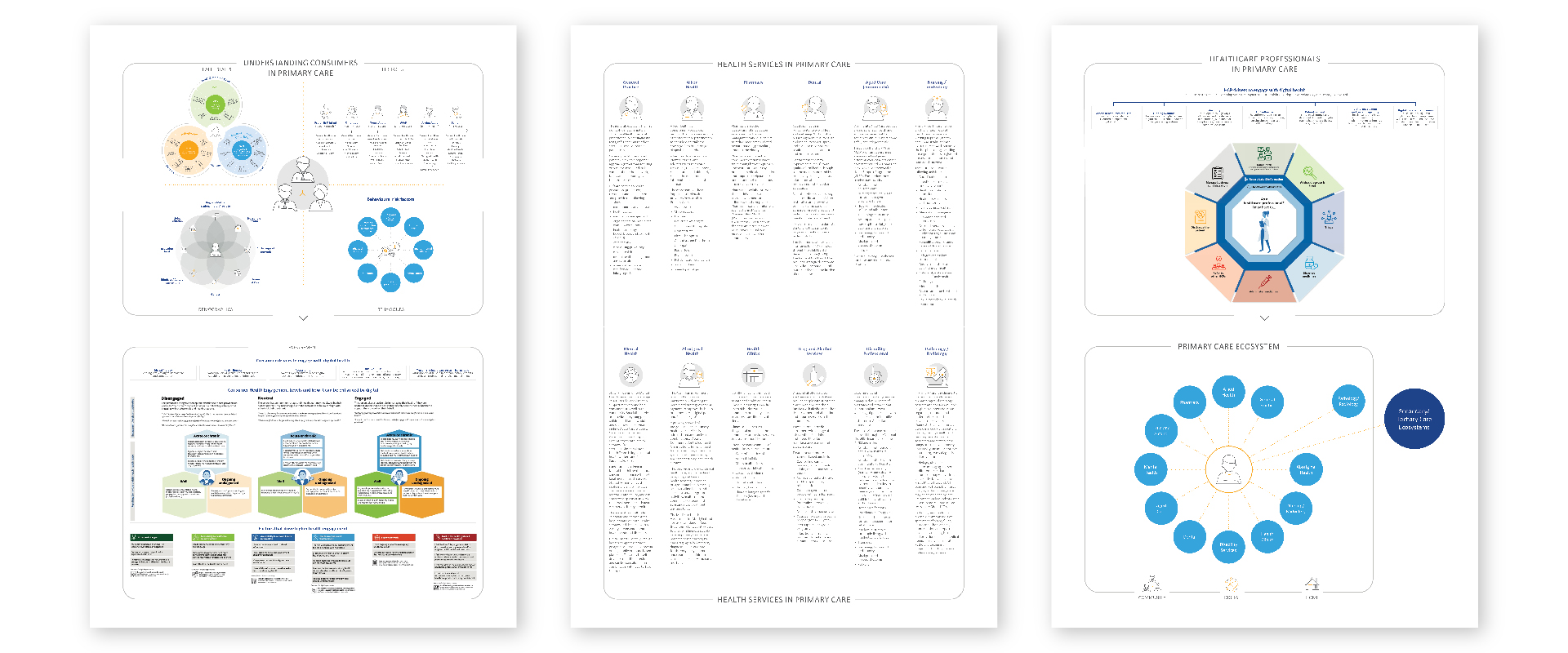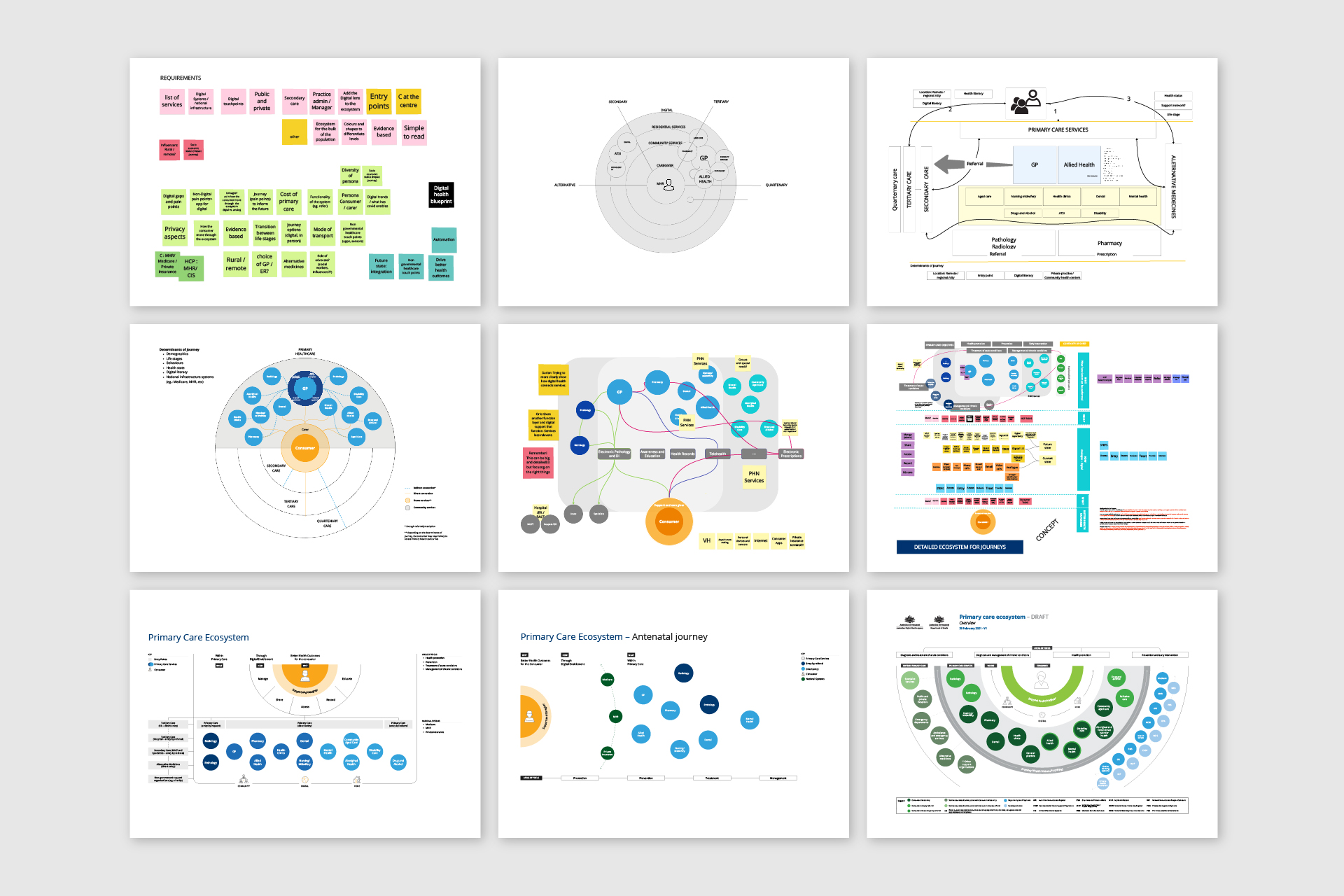— role
Visual design
UX design
Department of Health primary care pathways
The Australian Government – Department of Health engaged the ADHA Experience Design Team to deliver customer-centric research and insights to support their digital health strategy.
RESEARCH MODEL ▾

Project background
Primary care pathways is part of the Australian Government's plan to drive reform of the primary healthcare system. Aiming to guarantee Medicare to all Australians, build stronger primary care services and improve access to medicines through the Pharmaceutical Benefits Scheme (PBS), the project was led by national strategies and priorities.
This project saw us provide evidence-based and human-centred findings that identified the current state of the Australian primary healthcare consumer experience before exploring future opportunities for digital health enablement.
WORKSHOPS AND RESEARCH SYNTHESIS ▾

Setting the goals
Both phases of this project were characterised by an unwavering commitment to consumer-centricity. Phase one analysed the current state, with the vision of making it easier to all consumers to engage with primary care for better health outcomes through digital enablement. Phase two analysed the future state, aiming to contribute to the primary care reform agenda by addressing experience pain points and shifting them to digital opportunities.
— what we looked at
1. Journey map of the current consumer primary care experiences – what is working well and what is not
2. How digital solutions are supporting those health journeys
3. Key consumer pathways in primary care
4. The role of digital technologies in primary care
5. Current pain points of the Australian primary care experience and emerging trends for digital enablement
VISUALISING THE ECOSYSTEM – EVOLUTION ▾

Project development
The project development was always based on transparent two-way communication with the key stakeholders, starting with a clear brief, roadmap and design research scope. We then progressed to a sprint of desktop research to uncover evidence and gaps to kick-off an iterative surfacing of needs, development mapping and the design process.
— our (ADHA) approach
Human-centered: deliver project objectives prioritising the customers' experience and perspective
Collaborative: stakeholders and customers are actively engaged in the project delivery
Iterative: an exploratory, adaptive and iterative approach towards implementation
Evidence-led: researched and validated, project outcomes and design deliverables
Holistic: scope and strategies which aim to achieve an inclusive, holistic view of requirements
METHODOLOGY ▾

Exploring primary care
To confirm our desktop research findings, we partnered with an external research team that surveyed 1,345 Australian adults aged 18+, from different genders, ages, states and regions. On top of this, we ran a four-day online community field research program, including digital access to healthcare, user testing and in-depth hour-long interviews with 25 health providers.
Along with the quantitative and qualitative findings, we ran several key stakeholder workshops to also inform our design insights and iterations.
— project deliverables
1. Research model
2. Primary care ecosystem overview
3. Population segment cards
4. Primary care ecosystem layers
5. Consumer journeys
6. Research report
7. Final report of primary healthcare pathways
8. Executive summary report
9. Consumer journeys summary
CONSUMER PROFILES, ECOSYSTEM LAYERS AND CONSUMER JOURNEYS ▾

Synthesising findings
Following an extensive review of the literature (immersion) and qualitative and quantitative data (exploration and measurement), three main challenges were identified: lack of convenience, lack of flexibility and lack of collaboration. Alongside five key themes, they summarised the Australian consumer experience in primary care today:

Introducing more digital solutions into a fragmented healthcare system today will not solve the current experience challenges and may even exacerbate their disjointed nature. Instead, care must be ‘reimagined’ with digital principles at its core.